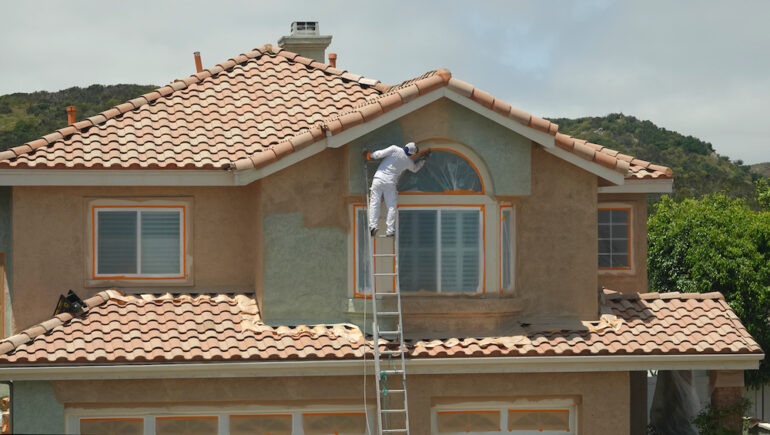You have many siding choices when building a home. One that has been around for centuries is simple, unassuming stucco. Consider stucco’s strengths and weaknesses when deciding which siding to use.
Stucco and its rivals
Stucco is one of several home siding materials.
- Brick and stone are timeless and durable. They convey a stately appeal to a home’s exterior.
- Wood plank siding has been around as long, if not longer, than brick and stone. But starting about 30 years ago, it began losing ground to fiber cement plank siding.
- Fiber cement plank is what it sounds like. Cement and other ingredients are mixed and then formed into planks and sheet panels with simulated wood grain imprints. It is paintable, virtually fireproof and very durable.
- Vinyl siding also simulates natural plank wood. It also comes in sheets but is lighter and easier to install than other plank sidings.
Stucco contains cement, sand and lime. It is mixed and then spread onto the house’s sides with a trowel-like tool. Stucco can be colored with dye, which provides color consistency throughout. It also can be painted once dry. There is also a synthetic stucco material called Stucco and Exterior Insulation and Finish System, or EIFS for short.
In times past, stucco was primarily seen on southwestern and Mediterranean-style homes. However, Stucco’s appeal has grown and is now used with other exterior styles.
Stucco must be spread upon a textured surface for it to adhere correctly. For example, it can be applied to brick and evenly surfaced stone. To spread it over any other siding or to install stucco as original siding, a metal mesh base called lath is first installed on the home’s exterior walls. Then stucco is spread on the mesh.
Stucco’s strengths
There is a lot to like about stucco.
- It can be painted with ordinary house paint.
- Since it is spread by hand, creative designs can be worked into it.
- Stucco is spread with no seams. This gives an even appearance and reduces the chances of moisture getting in.
- The materials for stucco are inexpensive. Using stucco as exterior siding can be more expensive than some other choices, however, because of higher labor costs for installation.
No siding is perfect, and stucco is no different
- Because stucco is a thin layer of cement, a hard bump can punch a hole in it. Watch out for that errantly thrown baseball or too-wide turn of the mower.
- Repairing a stucco hole is not difficult. Fixing the hole means spreading a small amount of stucco with a trowel and then feathering out the edges. However, the patch may not match exactly because the original color fades with the sun and weather over time. You may end up repainting a wider area.
- Stucco is porous and can absorb moisture over time, causing mold and rot on the stucco’s surface. Mold can even begin to grow beneath stucco, so you must carefully monitor stucco for damage and maintain its surface.
- Because it is made of cement, stucco can crack over time. Cracks must be repaired quickly to prevent water from getting behind the stucco and causing mold or rot.
Related – Making Sense of Home Siding Selection


